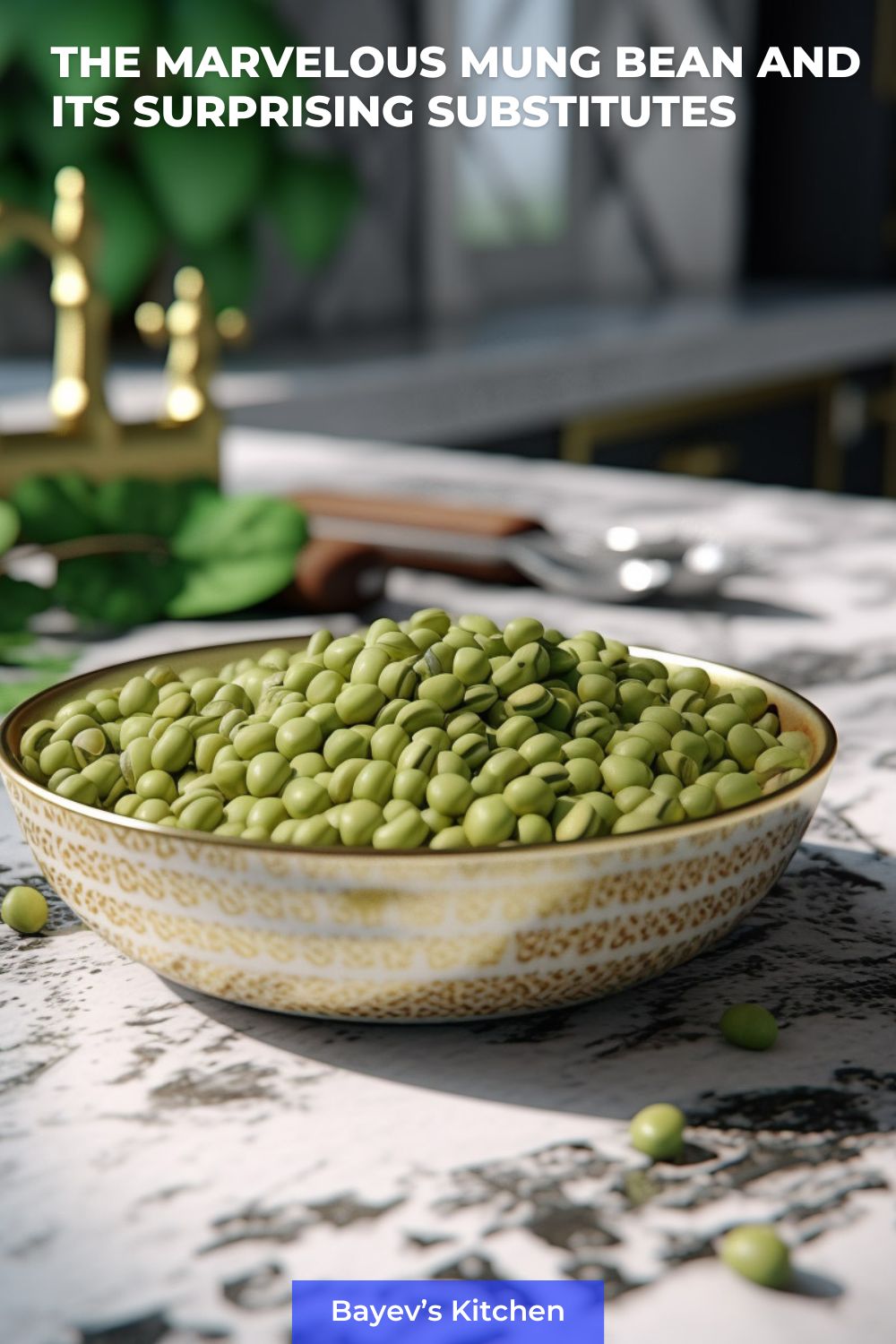Mung beans, alternatively known as the green gram, maash, the small but mighty legume, have made their way into numerous global cuisines, from India’s mung dal to the Philippines’ halo-halo. However, sometimes, you might find yourself in a situation where you need to seek substitutes for this versatile bean.
The reasons could range from dietary restrictions, flavor preferences, or simply the ingredient’s availability.
This article offers a comprehensive exploration of mung bean substitutes, diving into the culinary world to bring you not only their closest replacements but also other alternatives worth considering.
👅 Flavor Profile & Taste
It’s subtle, mildly sweet, earthy undertones, paired with a definitive nutty flavor, make it stand out in the legume family. This sweetness isn’t domineering; instead, it lends an inviting backdrop to the mung bean’s character, adding depth and interest to the multitude of dishes it graces.
The flavor of the mung bean is one part of the equation; its transformative texture contributes significantly to its appeal.
In their raw form, mung beans are hard and dense, a firm exterior that conceals the delightful changes that heat-induced cooking brings.
When cooked, they metamorphose into a soft, almost velvety texture, altering not just the mouthfeel but also the overall gustatory perception. These beans exhibit adaptability in their consistency, either maintaining their shape or easily mashing, accommodating a variety of cooking techniques and recipes.
Further enriching the mung bean’s flavor profile are its sprouts. The sprouts of the mung bean, teeming with a refreshing crunchiness, offer a contrasting texture that further diversifies the bean’s culinary uses. Often found as the crisp component in salads or stir-fries, they lend a burst of freshness to the dishes.
Comparable to other legumes like lentils, chickpeas, and peas, mung beans share a characteristic nuttiness and inherent versatility. However, it’s the harmonic combination of its delicate sweetness, earthy undertones, and pleasing texture that sets the mung bean apart. This symphony of sensory experiences makes the mung bean a remarkable and healthful ingredient, adding a touch of nutritional richness and taste to any meal it is a part of.
What Does it Taste Like?
The sweetness of mung beans is comparable to the mild sweetness found in carrots or sweet peas. This delicate sugary note is not overly prominent but rather a gentle undertone that contributes to the bean’s overall taste.
The earthiness of mung beans echoes the flavors of root vegetables like beets or turnips, though much milder. This earthy taste harmonizes with the sweetness, adding a depth of flavor that enriches the mung bean’s taste profile.
The slight nuttiness of mung beans could be likened to that of sunflower seeds or lightly toasted pine nuts. It’s a flavor that doesn’t dominate but provides an appealing nuance, complementing the sweet and earthy elements of the bean.
When cooked to maintain their shape, they might remind one of al dente pasta, while when mashed, their texture is reminiscent of a creamy potato mash.
🔄 Best Mung Bean Substitutes
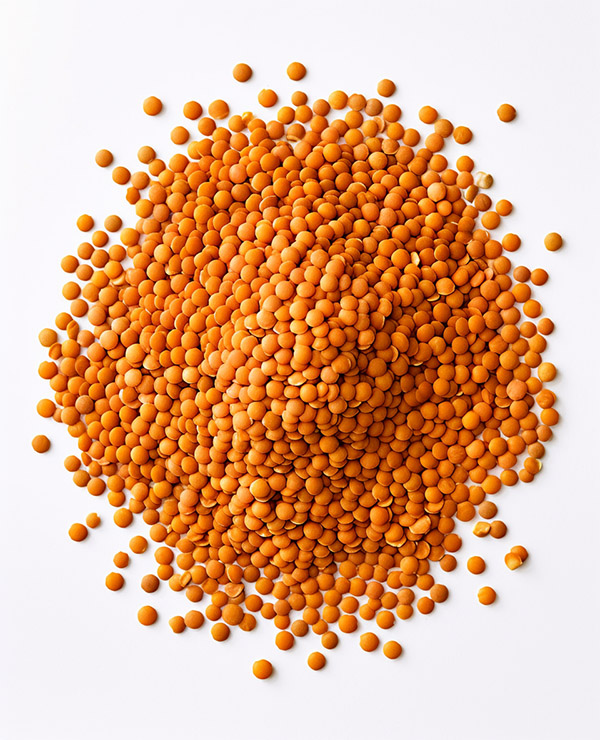
Lentils
Lentils make an excellent substitute for mung beans. Their similar texture and mildly earthy flavor make them an ideal 1:1 replacement. Cooking times are similar, but lentils may require slightly less soaking time. The substitution will result in a slightly more robust, earthy flavor.
Ratio: 1:1
Lentil vs Mung beans
The lentil, an ancient staple, is a treasure trove of nutrients. Its high protein content makes it a critical element in vegetarian diets. Moreover, it boasts a robust fibre count that aids in maintaining healthy gut flora and facilitating efficient digestion. Lentils are also known for their folate and iron content, integral for maintaining energy levels and promoting blood health.
On the flip side of the coin, we have the mung beans. Originating from India, these beans have spread globally due to their versatility and nutrient-rich profile. They are laden with essential vitamins and minerals, such as potassium, magnesium, and vitamin B6. Mung beans are applauded for their rich antioxidant composition, which can aid in combating harmful free radicals.
Comparing lentils vs mung beans, both stand tall with their respective health benefits. However, the distinction lies in their culinary usage. Lentils, with their earthy flavor, work well in hearty soups and stews, while mung beans, with their slightly sweeter profile, are commonly used in salads, stir-fries, and even desserts.

Chickpeas
Chickpeas, or garbanzo beans, offer a nutty flavor somewhat similar to mung beans. They can be substituted at a 1:1 ratio but require a longer cooking time due to their larger size. The final dish will have a more pronounced flavor and a slightly creamier texture.
Check for chickpeas substitutes here.
Ratio: 1:1
Mung Beans vs Chickpeas
The mung beans, with their subtly sweet, mildly earthy, and slightly nutty flavor, provide a less assertive taste than the robust, nutty, and slightly starchy flavor profile of chickpeas. This contrast in taste implies that mung beans can adapt easily across various dishes, subtly enhancing the flavors of other ingredients, while chickpeas, with their more pronounced flavor, tend to stand out in culinary preparations.
Cooked mung beans exude a soft and almost velvety texture, which varies distinctly from the denser, meatier feel of cooked chickpeas. This difference in texture suggests that mung beans can be used in a wider variety of ways, including in dishes where they are mashed or pureed, while chickpeas, retaining their shape well when cooked, lend themselves excellently to dishes that require a hearty and robust component.
Nutritionally, both mung beans and chickpeas are rich sources of protein and fiber, but the specifics of their nutrient content differ, further distinguishing their culinary roles and health benefits.

Split Peas
Split peas can replicate the texture and mild flavor of mung beans effectively. They substitute at a 1:1 ratio and have a similar cooking time. The flavor is a bit sweeter, giving dishes a slightly different but enjoyable twist.
Ratio: 1:1
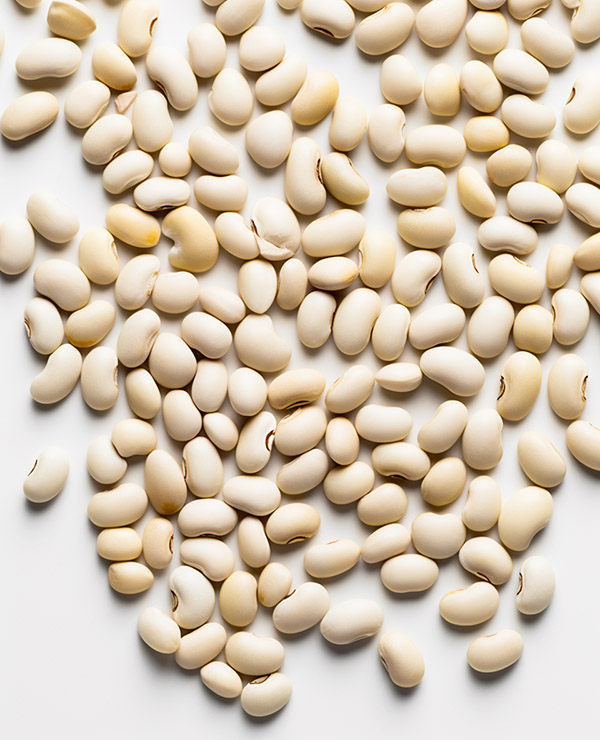
Black-eyed Peas
These beans can provide a similar texture to mung beans when cooked. Substitute them at a 1:1 ratio, but note that they have a stronger, earthier flavor and require a slightly longer cooking time.
Ratio: 1:1
Mung Beans vs Black-Eyed Peas
When it comes to a comparison between mung beans and black-eyed peas, one cannot overlook their distinctive flavor profiles, textures, and overall characteristics. Mung beans, with their subtly sweet and slightly nutty taste, provide a gentle contrast to the more pronounced, savory flavors of the black-eyed peas. This difference allows mung beans to blend subtly into a multitude of dishes, while black-eyed peas tend to assert their presence more noticeably, making them a focal point in many traditional recipes.
The mung beans, once cooked, exhibit a soft and almost velvety texture. They can either retain their shape or mash easily, depending on the cooking method, introducing a degree of versatility in their use. On the other hand, black-eyed peas, when cooked, present a creamy interior encased by a firmer skin, delivering a delightful textural contrast in every bite. This firmer texture allows them to hold their shape well, making them an excellent choice for stews and salads.
In essence, while mung beans might be seen as culinary chameleons due to their adaptable flavor and texture, black-eyed peas stand out with their bold taste and pleasing contrast in texture.
Both bring valuable nutritional benefits and unique culinary qualities to the table, making the choice between them a matter of individual taste, dietary preferences, and the specific requirements of the dish at hand.
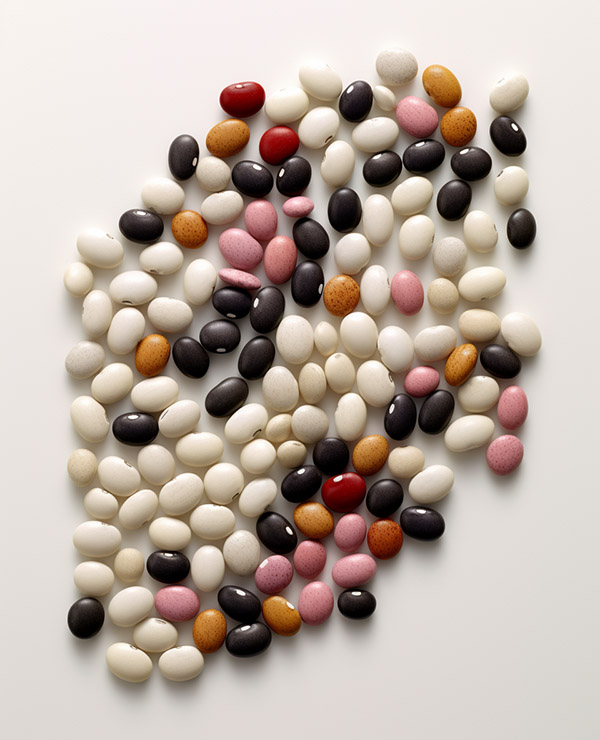
Adzuki Beans
Adzuki beans, like mung beans, have a natural sweetness. They substitute well at a 1:1 ratio, although they have a slightly longer cooking time. The flavor is richer and sweeter than mung beans.
Ratio: 1:1
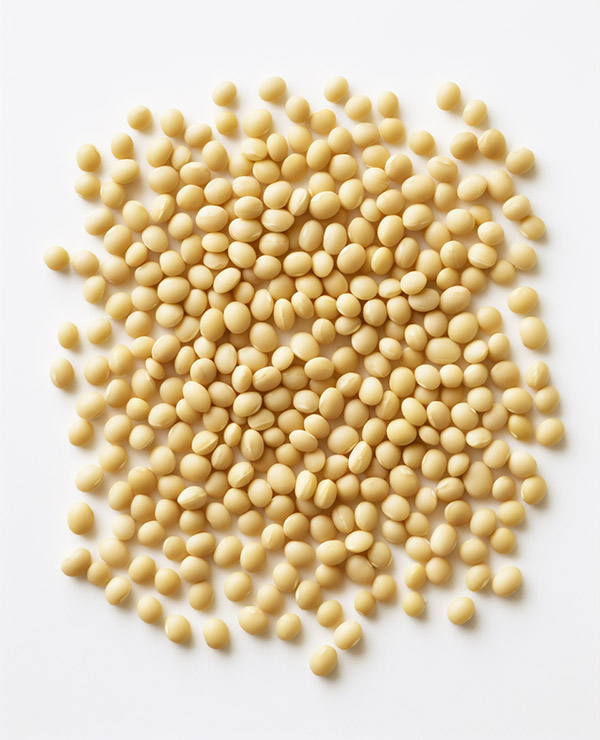
Soybeans
Soybeans have a similar texture and mild flavor to mung beans, making them a suitable replacement at a 1:1 ratio. However, they require a longer cooking time. The resulting flavor will be slightly more robust and nutty.
Ratio: 1:1
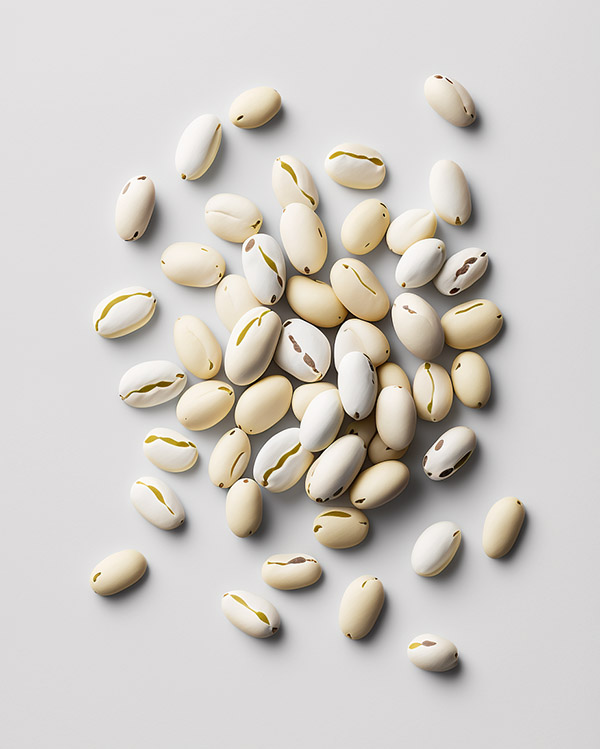
Cannellini Beans
These beans can replicate the texture and mild flavor of mung beans. Substitute at a 1:1 ratio and expect a similar cooking time. The flavor will be slightly creamier and more buttery.
Ratio: 1:1
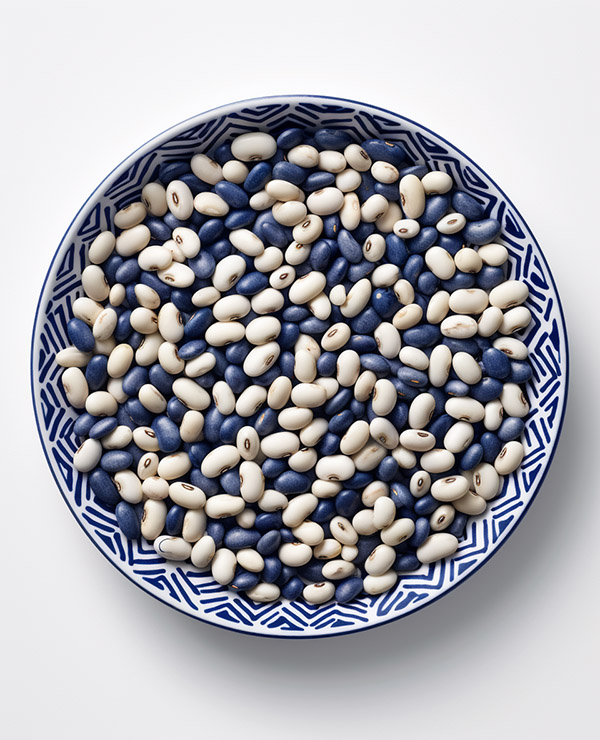
Navy Beans
Navy beans can substitute for mung beans at a 1:1 ratio, with a similar cooking time. They offer a slightly firmer texture and a mildly sweet, nutty flavor.
Ratio: 1:1

Kidney Beans
Kidney beans, though larger, can be substituted for mung beans at a 1:1 ratio. They require a longer cooking time and will result in a more substantial texture and a deeper flavor.
Ratio: 1:1

Lima Beans
Lima beans, also known as butter beans, can substitute mung beans at a 1:1 ratio and have a similar cooking time. Their buttery flavor and soft texture make for a delicious variation in dishes.
Ratio: 1:1
⤵ Other Mung Bean Substitutes
Green Peas
Green peas offer a sweet flavor that can be a welcome addition to dishes. Substitute at a 1:1 ratio, but keep in mind that their cooking time is much shorter. The flavor will be noticeably sweeter and lighter.
Quinoa
Quinoa, though a seed, can replace mung beans in certain dishes. Substitute at a 1:1 ratio, but note that quinoa cooks more quickly. This substitution will result in a fluffier texture and a slightly nuttier flavor.
Couscous
Couscous can substitute mung beans in salads and pilafs at a 1:1 ratio. However, couscous cooks much faster. The texture will be much lighter, and the flavor will be quite neutral.
Bulgur Wheat
Bulgur wheat can substitute mung beans at a 1:1 ratio, though it cooks faster. The substitution will result in a heartier texture and a mildly nutty flavor.
Rice
Rice, especially brown or wild rice, can replace mung beans at a 1:1 ratio. The cooking time will vary depending on the type of rice. The texture will be softer, and the flavor will be quite mild.
Farro
Farro can substitute mung beans at a 1:1 ratio, but it cooks faster. Expect a chewier texture and a nutty, complex flavor.
Millet
Millet can replace mung beans at a 1:1 ratio. It cooks faster and offers a light, fluffy texture with a mildly sweet flavor.
Barley
Barley can be used in place of mung beans at a 1:1 ratio. The cooking time is longer, and the resulting flavor is richer and maltier.
Amaranth
Amaranth, a nutritious grain, can replace mung beans at a 1:1 ratio. It cooks quickly and offers a slight peppery flavor with a creamy texture.
Buckwheat
Buckwheat can substitute mung beans at a 1:1 ratio. It cooks quickly and will result in a robust, nutty flavor and a chewy texture.
💡Tips and Guidance
Experimenting with mung bean substitutes can lead to delicious and exciting culinary adventures. Here are a few tips and guidance for using these substitutes:
- Consider the Dish: The type of dish you’re preparing may influence your choice of substitute. For example, lentils and chickpeas work well in hearty stews, while quinoa and couscous are better suited for salads.
- Soaking Times: Most beans and legumes benefit from soaking before cooking. This reduces cooking time and aids in digestion.
- Combining Substitutes: Don’t be afraid to mix and match. Combining different substitutes can add depth and complexity to dishes.
- Spice It Up: Mung beans have a mild flavor that pairs well with a variety of spices. Don’t forget to adjust your seasonings when using a more strongly flavored substitute.
- Try Sprouting: Many of these substitutes, especially the beans and legumes, can be sprouted, just like mung beans. Sprouting offers a crunchy texture and enhanced nutritional benefits.
Substituting ingredients in cooking is more than just a workaround for unavailable ingredients. It’s a gateway to exploring new flavors, textures, and culinary possibilities. Happy experimenting!
19 Best Mung Beans Recipes
1. Mag nu Saak – Easy Mung Bean Gujarati Curry
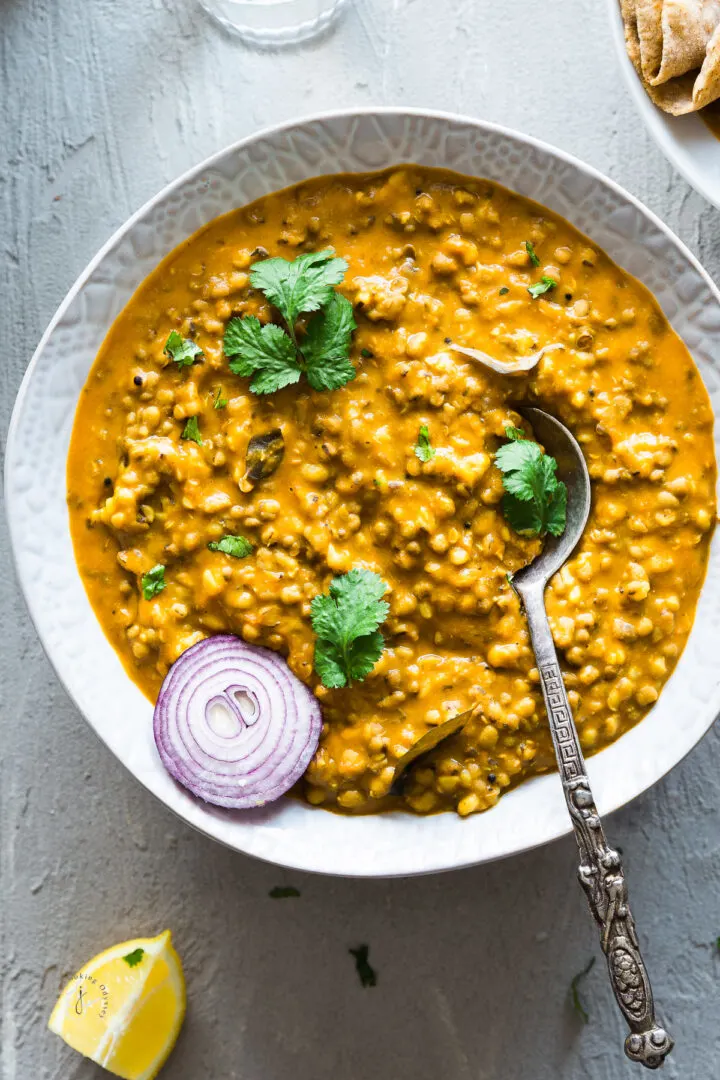
Mag nu Saak/Shaak is a traditional Gujarati recipe made with moong beans, tomato and garlic. This traditional curry is also known as Lasanwala Mag.
Traditionally, Gujarati curries may have garlic but rarely use onion in the base of the curry. The base of these moong bean curry is a finger-licking mix of curry leaves, tomato and garlic. The saak or curry is runny, more like a dal consistency and so can also be called mag nu rasavalu saak.
2. Instant Pot Green moong dal
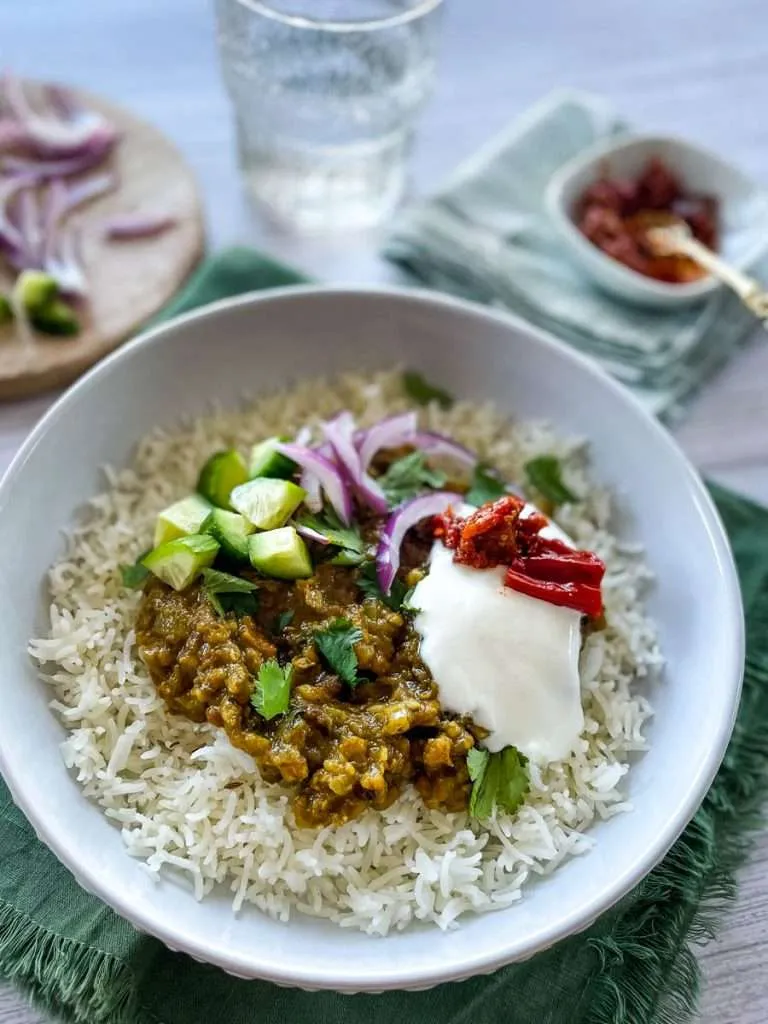
Are the real, Indian comfort foods. Most green moong dal recipes are very soupy. This recipe is makes a thicker curry base. It uses a little less water than most recipes.
3. How to sprout mung beans DIY
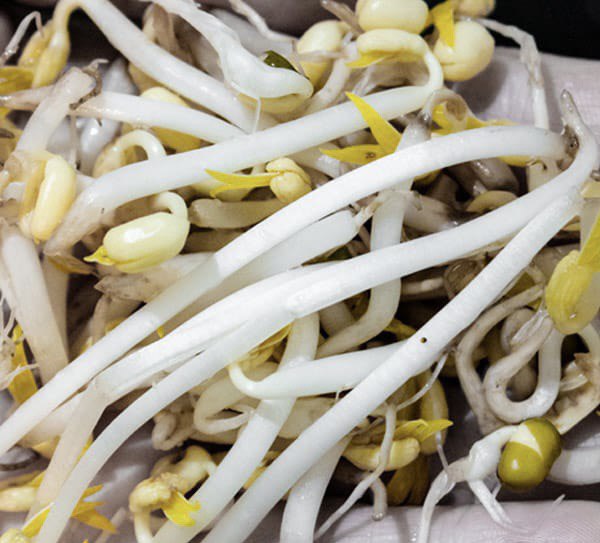
Showing you in this post how to sprout mung beans easily at home. We will also cover the pros and cons of DIY style Mung bean sprouts at home so that you can make a sprout salad or a pad thai at home!
4. Shrimp Chow Fun Recipe
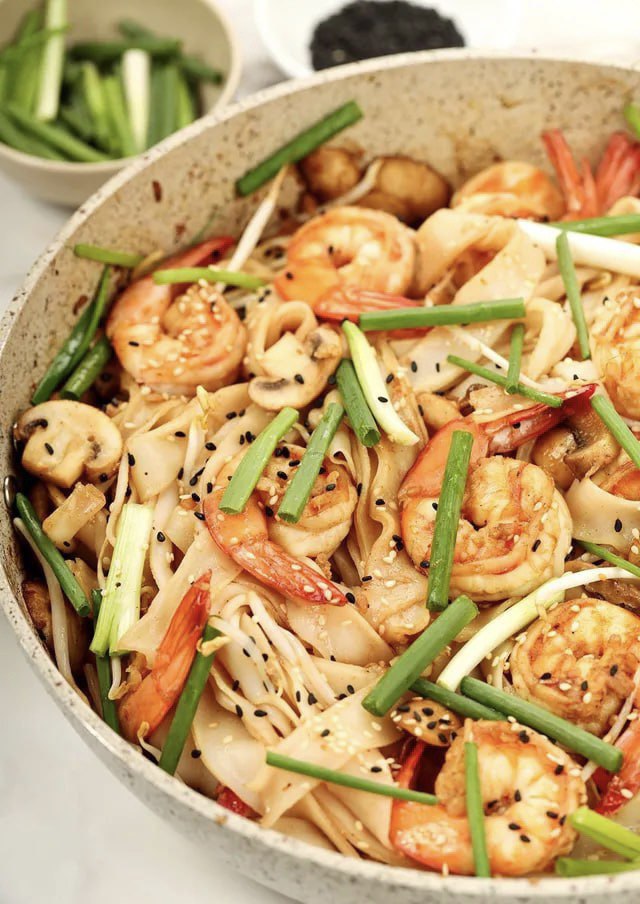
Wide rice noodles stir-fried with mushrooms, mung bean sprouts, and scallions in a Chinese soy-sesame sauce make this tasty Shrimp Chow Fun.
5. Sprouted Moong and Quinoa Dosa/Indian Crepes

Gluten-free, Vegan Friendly Sprouted Moong and Quinoa Dosa, is a delicious breakfast recipe that can prepared in jiffy with little preparation done in advance. Loaded with two superfoods this one is one of the healthiest breakfast option for all the age groups.
6. Sprouted Moong Pulao
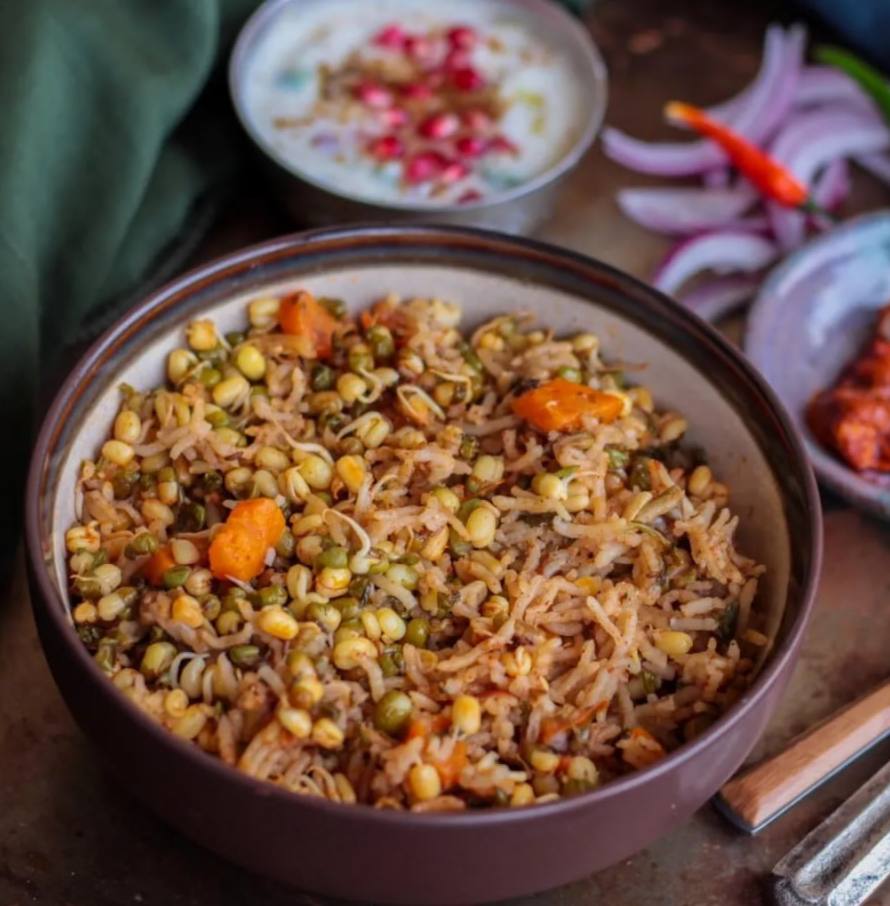
Fiber and Protein rich rice Pulao recipe that has nutritious and healthy Whole Moong Beans Sprouts and fresh winter greens.
Pulao, a one pot meal preferably made with rice along with vegetables or any kind of meat, flavored with aromatic Indian Spices. It is a complete wholesome meal that is not only filling but also has all the essential nutrients that our body requires.
7. Sukhiyan/ Sugiyan – Vegan Mung bean fritters {sweet}

Sukhiyan/ Sugiyan is a traditional snack from Kerala, a South Indian state. It is mung bean or green gram fritters.
Sukhiyan/ Sugiyan is basically Mung bean/ Green gram cooked in Jaggery syrup and coconut. It is rolled into balls and dipped in batter and deep-fried.
8. Cendol
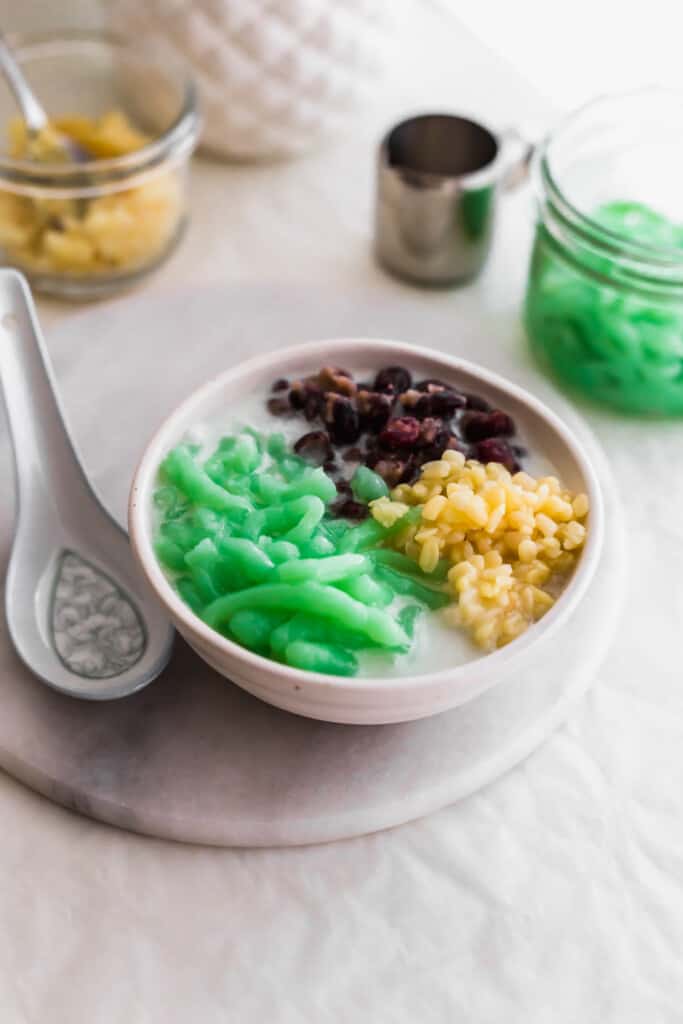
This recipe for Cendol is an icy dessert originating from Southeast Asia. It comprises of pandan jellies and an assortment of beans in creamy coconut milk.
9. Vegan Savory Pancakes (Mung Bean Scallion Pancakes)
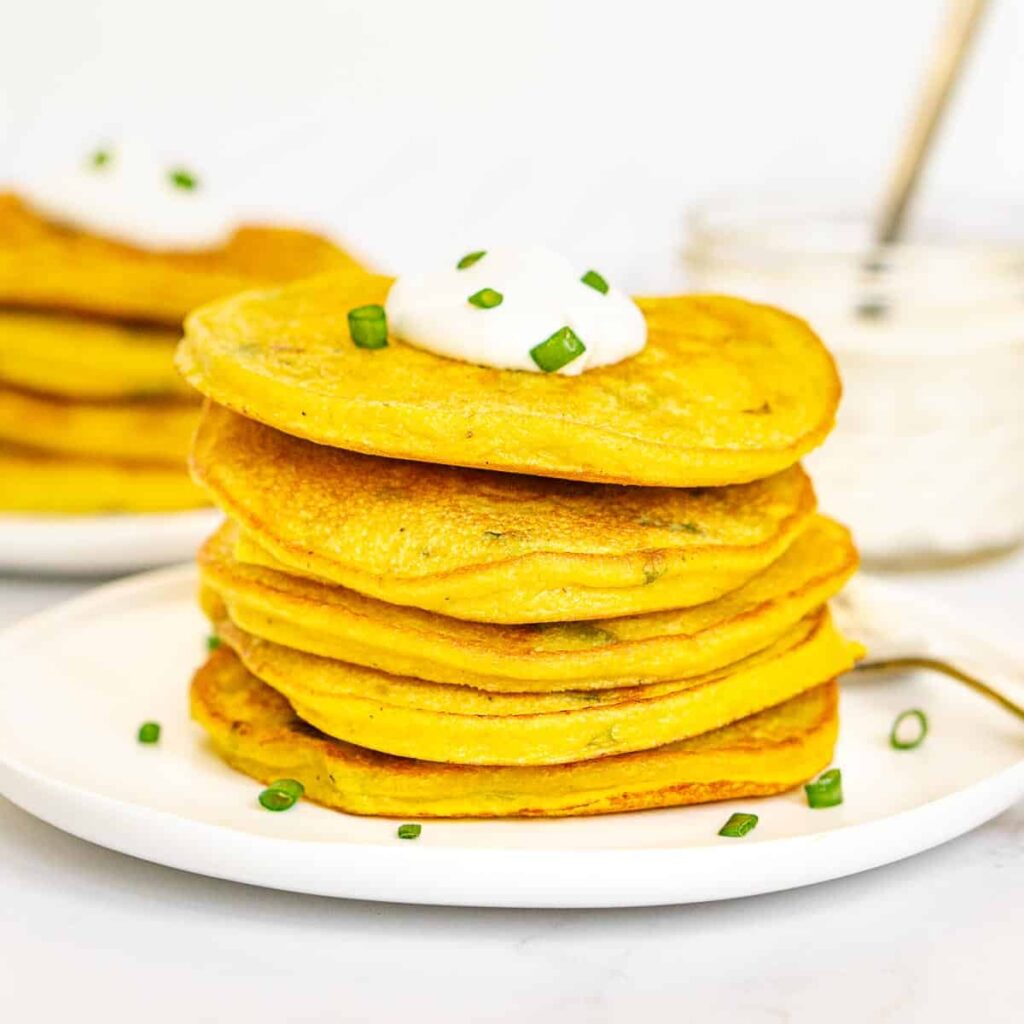
These Vegan Mung Bean Pancakes make the PERFECT savory breakfast if you’re trying to cut down on the sugar. They also make a great snack or side dish because of the savory sautéed scallions in the pancakes. Serve with a dollop of vegan sour cream and enjoy!
The batter for these pancakes is made in a blender and can be made in advance for a quick 5 minute breakfast. The pancakes happen to be gluten-free as well!
10. Rustic Mung Bean Shepherd’s Pie (Gluten-Free, Vegan)
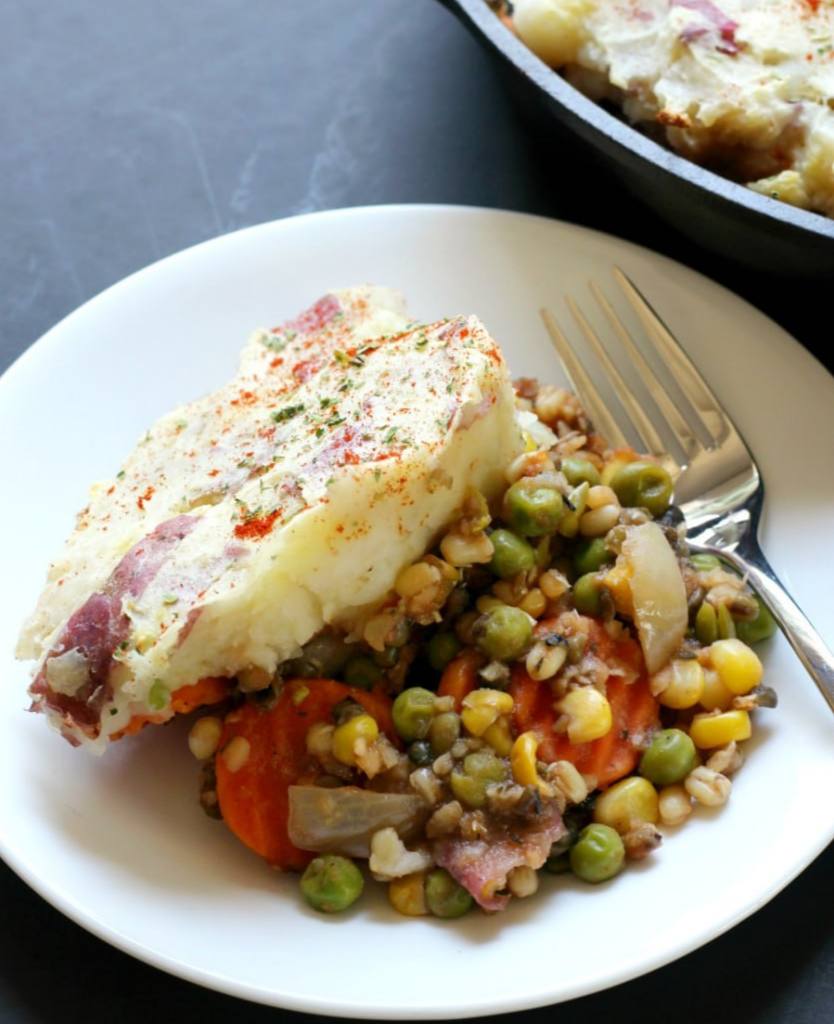
The traditional and budget-friendly Irish recipe with a twist! This meatless Rustic Mung Bean Shepherd’s Pie is gluten-free, vegan, and allergy-friendly. Whether you’re in need of a easy family dinner to serve a crowd of just need some healthy comfort food, this cottage pie is the way to go!
11. Sprouted Mung Bean Salad

The goodness of vegetables and sprouted green gram is packed into the healthy and crunchy sprouted mung bean salad. A nutritious and protein rich vegan salad to enjoy anytime.
12. Green Moong Dal Recipe (Sabut Mung Curry)
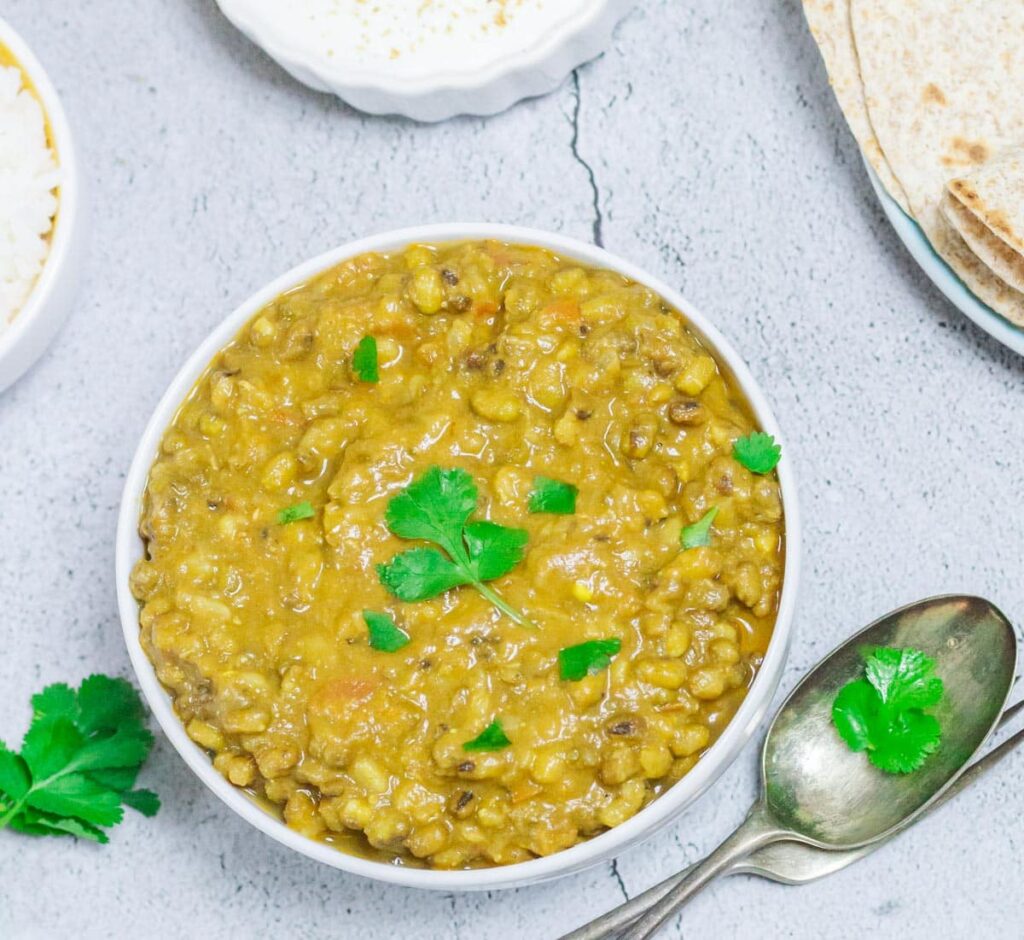
Green moong dal is a nutritious, protein-rich simple dish made with green mung beans and aromatic Indian spices. It is hearty, comforting and one of the easy recipes perfect to make for a midweek meal. It is a gluten-free and vegan Indian curry goes well with rice or roti.
13. Sweet Mung Bean Soup
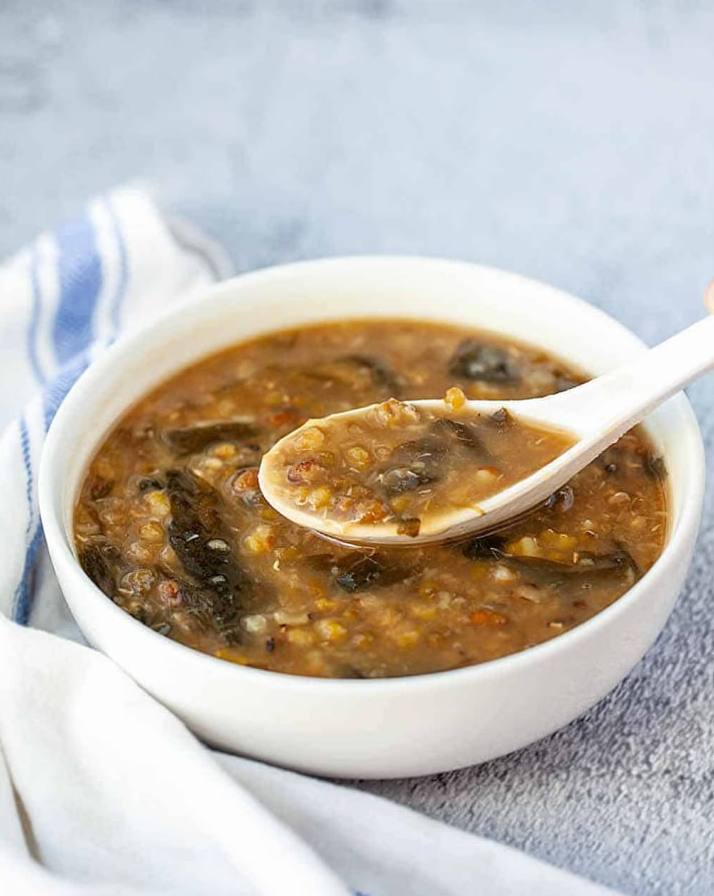
Sweet green mung bean soup is a classic Cantonese Chinese sweet dessert soup like sweet red bean soup, black sesame soup, taro sago, black glutinous rice dessert and mango pomelo sago. This sweet mung bean soup recipe has both instant pot and top stove method. Also, this mung bean dessert soup can serve as warm or chill.
14. Che Ba Mau / Cold Three-Color Vietnamese Dessert
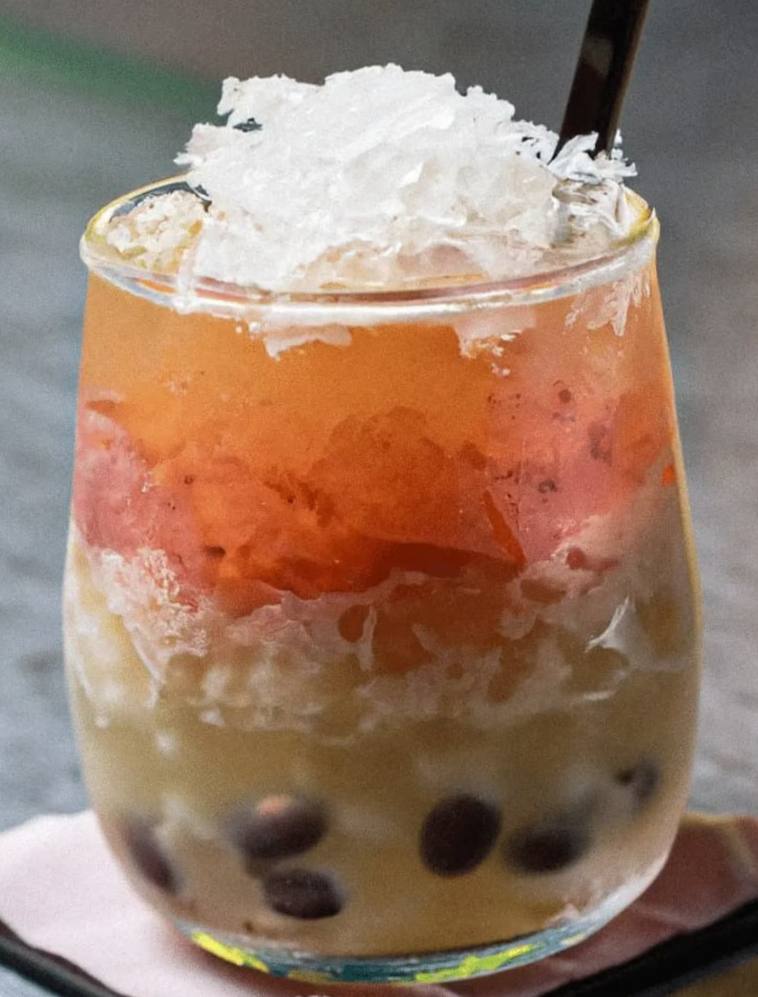
Chè Ba Màu, which translates to “Three-Color Dessert,” is a popular and refreshing Vietnamese dessert. “Che” is the Vietnamese word for any kind of sweet drink, soup or pudding. As Chè Ba Màu’s name suggests, this dessert is characterized by its three distinct layers of vibrant colors (it’s really actually four layers, if you include the ice). You can make the components for this treat ahead of time, so that it’s effortless to throw together whenever you want a refreshing sweet.
15. Peerkangai Kootu: South Indian Ridge Gourd Curry

Peerkangai Kootu is an easy-to-prepare nutritious curry made with tender ridge gourd, moong dal, coconut, and a fragrant blend of spices. This is going to absolutely upgrade your meal prep, because it’s nourishing as heck, and a lower-carb alternative to dal.
16. Easy Just Egg Frittata
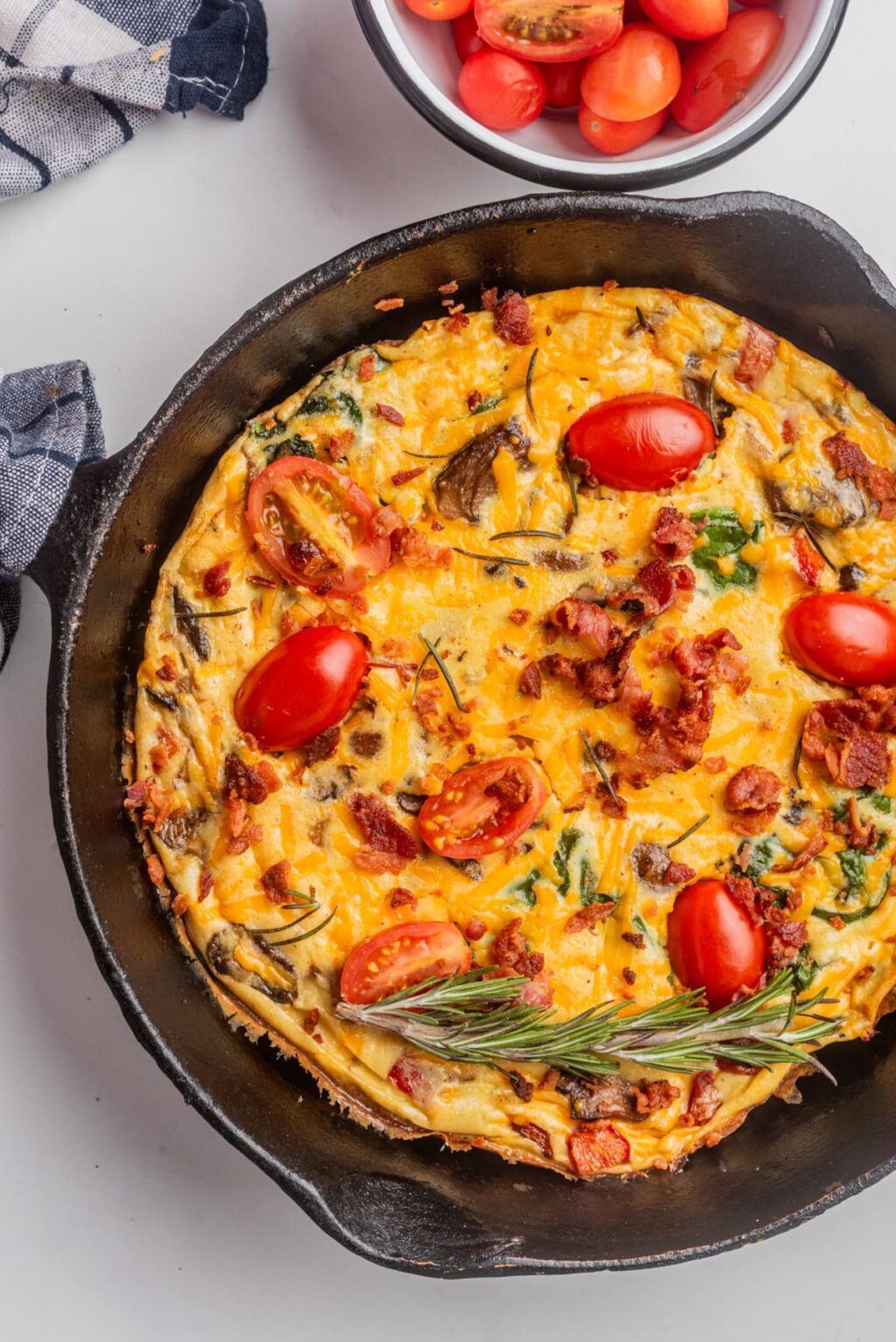
This Just Egg Frittata recipe is so easy, it’ll have you dancing around the kitchen with your spatula like nobody’s watching. If you love savory vegan breakfast recipes, this dairy-free, eggless frittata is light, fluffy, creamy and filling, all in one skillet. Oodles of fresh, healthy vegetables are layered throughout, then it’s topped with fresh rosemary and banana peel bacon bits for a healthy, satisfying crunch. High protein, low carb and low calorie too!
17. Banh Xeo (Savory Vietnamese Crepes)

Banh xeo, or mouthwatering Vietnamese sizzling crepes, is an aromatic turmeric-infused batter, with succulent pork and shrimp fillings, and vibrant herbs. Get ready to sizzle, flip, and wrap your way to a taste sensation that combines crispiness, fragrance, and savory goodness.
18. Che Ba Mau (Vietnamese Three Color Dessert)

Chè Ba Màu, or Vietnamese Three Color dessert, is an easy, delicious, and refreshing dessert that’s reminiscent of Filipino halo-halo. It typically consists of three layers of tri-colored ingredients of red beans, a sweetened mung bean paste, and chewy pandan jelly in a glass before being topped with shaved ice and a creamy coconut sauce.
19. How to Cook Mung Beans
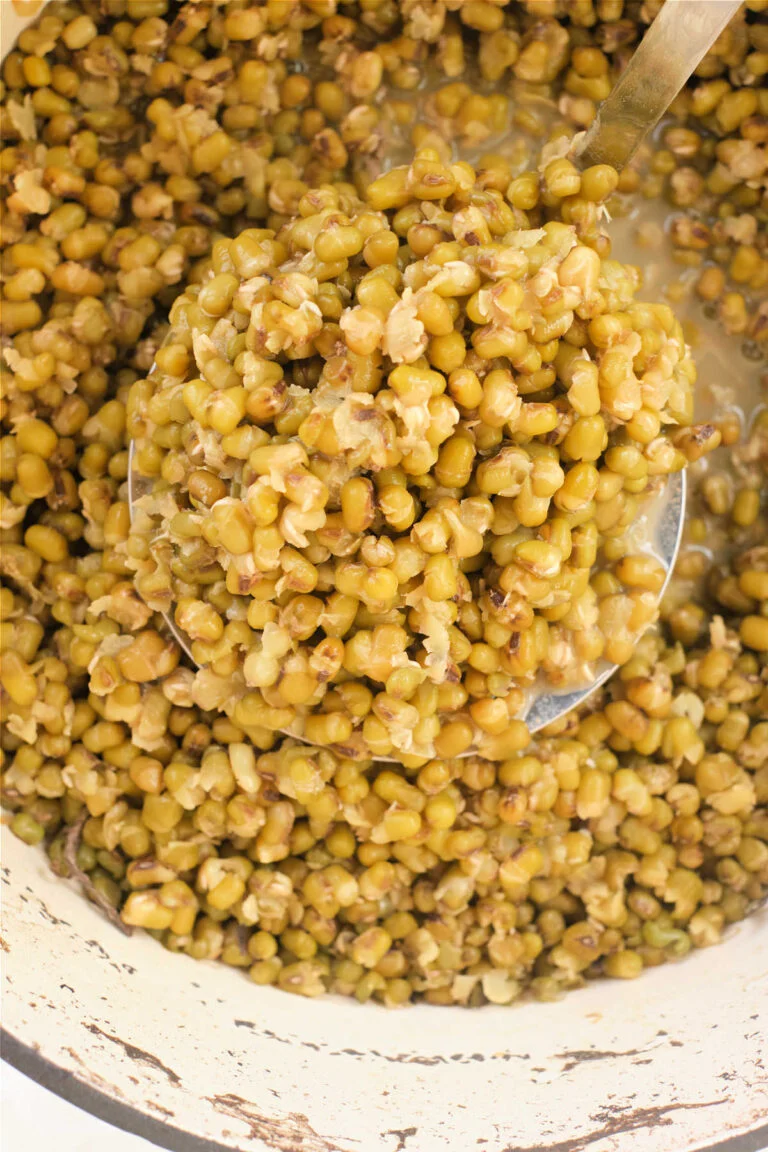
We’re here to share how to cook mung beans on the stove, in a pressure cooker, rice cooker or Instant Pot or in a slow cooker today. A healthy green bean with a ton of flavor, you are going to be surprised at how easy cooking dry beans can be.
